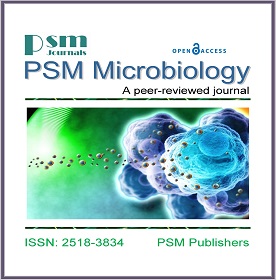Anti-bacterial Activity of Moringa oleifera Seeds against Selected Bacterial Pathogens
Keywords:
Moringa oleifera, Antibacterial activity, Bacteria isolates, Aqueous extract, Ethanol extracts.Abstract
Moringa oleifera seeds were collected and analysed for phytochemicals using ethanol and aqueous solvents in order to determine the antibacterial efficacy of M. oleifera seeds against certain bacterial infections. The agar well diffusion method was used to further investigate the antibacterial activity of two extracts (ethanol and aqueous) on a selection of test organisms at various concentrations. Additionally, the Minimum Inhibitory Concentration (MIC) and Minimum Bactericidal (MBC) of the extracts were determined. The presence of alkaloids, tannins, flavonoids, saponin, cardiac glycoside, and phenol was confirmed by phytochemical examination. The ethanolic extract exhibited higher antibacterial activity in comparison to the aqueous extract. Our results revealed a significant difference (p<0.05) in the zones of inhibition at varying doses between the ethanol and the aqueous extract of the seed. Escherichia coli showed the highest zone of inhibition (21.50±7.07 mm), followed by Staphylococcus aureus (20.00±0.01 mm) while Pseudomonas aeruginosa (16.00±0.00 mm) showed the lowest zone of inhibition against different concentrations of the ethanol seed extract. S. aureus showed the highest zone of inhibition (24.00±1.41 mm) followed by P. aeruginosa (22.50±0.00 mm) and E. coli showed the lowest zone of inhibition (19.50±8.07 mm) against different concentrations of the aqueous seed extract. The minimum inhibitory concentration (MIC) for all test organisms using ethanol extract was 50% while for aqueous extract both E. coli and S. aureus showed 40%, and P. aeruginosa 25%. In the ethanol extract, the MBC values for E. coli were 30%, while S. aureus and P. aeruginosa showed 25%. However, in the aqueous extract, the MBC values for S. aureus were 30%, E. coli were 25%, and there was no discernible MBC for P. aeruginosa. Antimicrobial activity against the test species were demonstrated by the ethanolic and aqueous extracts at varying doses. It is feasible to use the extracts, especially the ethanol extract, as an antibacterial agent to treat infectious pathogenic disorders since it had the greatest impact of all the extracts. Drugs for the treatment of many illnesses and disorders can be made using M. oleifera in the pharmaceutical industry.
Downloads
Published
How to Cite
Issue
Section
License
Copyright (c) 2023 PSM

This work is licensed under a Creative Commons Attribution-NonCommercial 4.0 International License.




